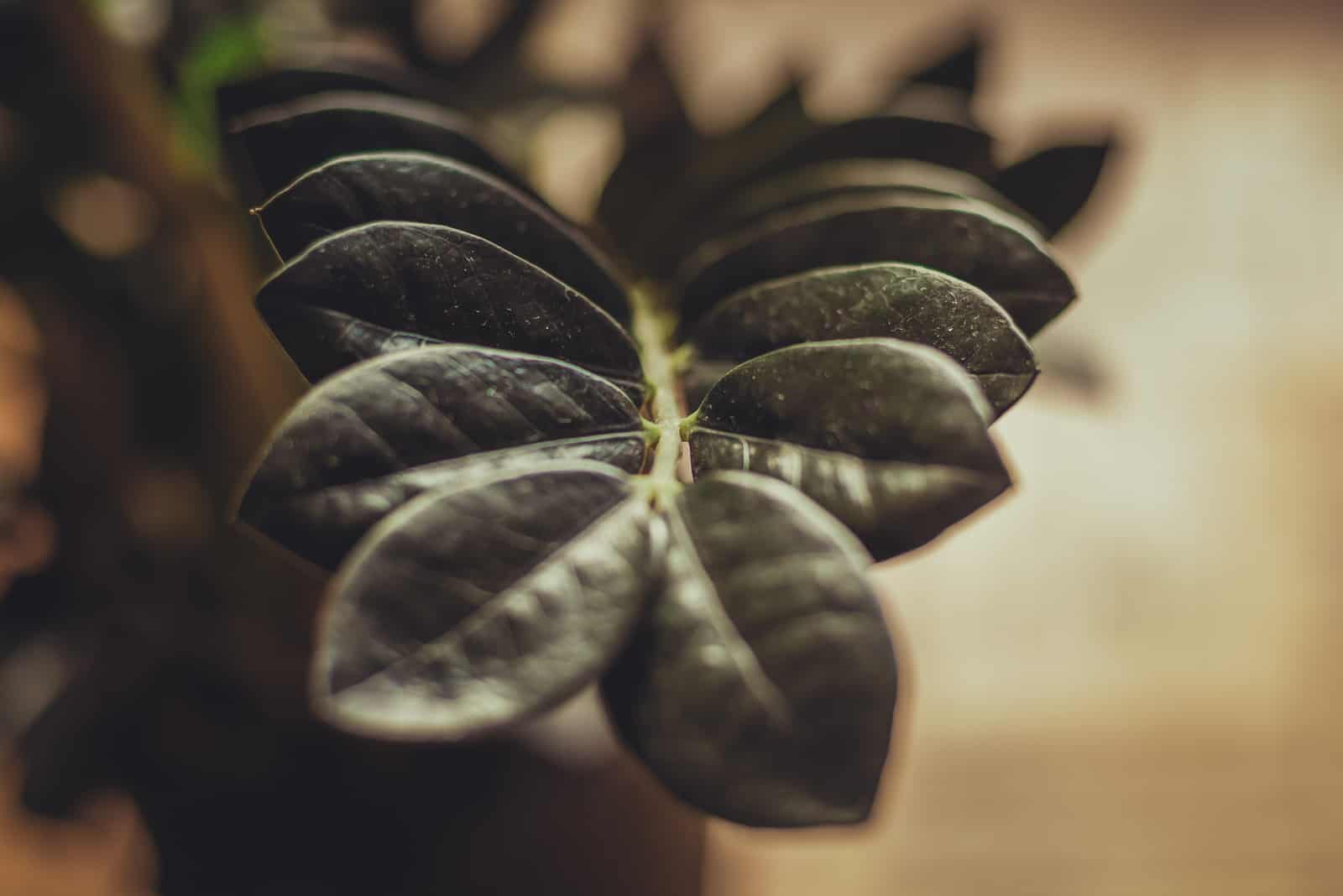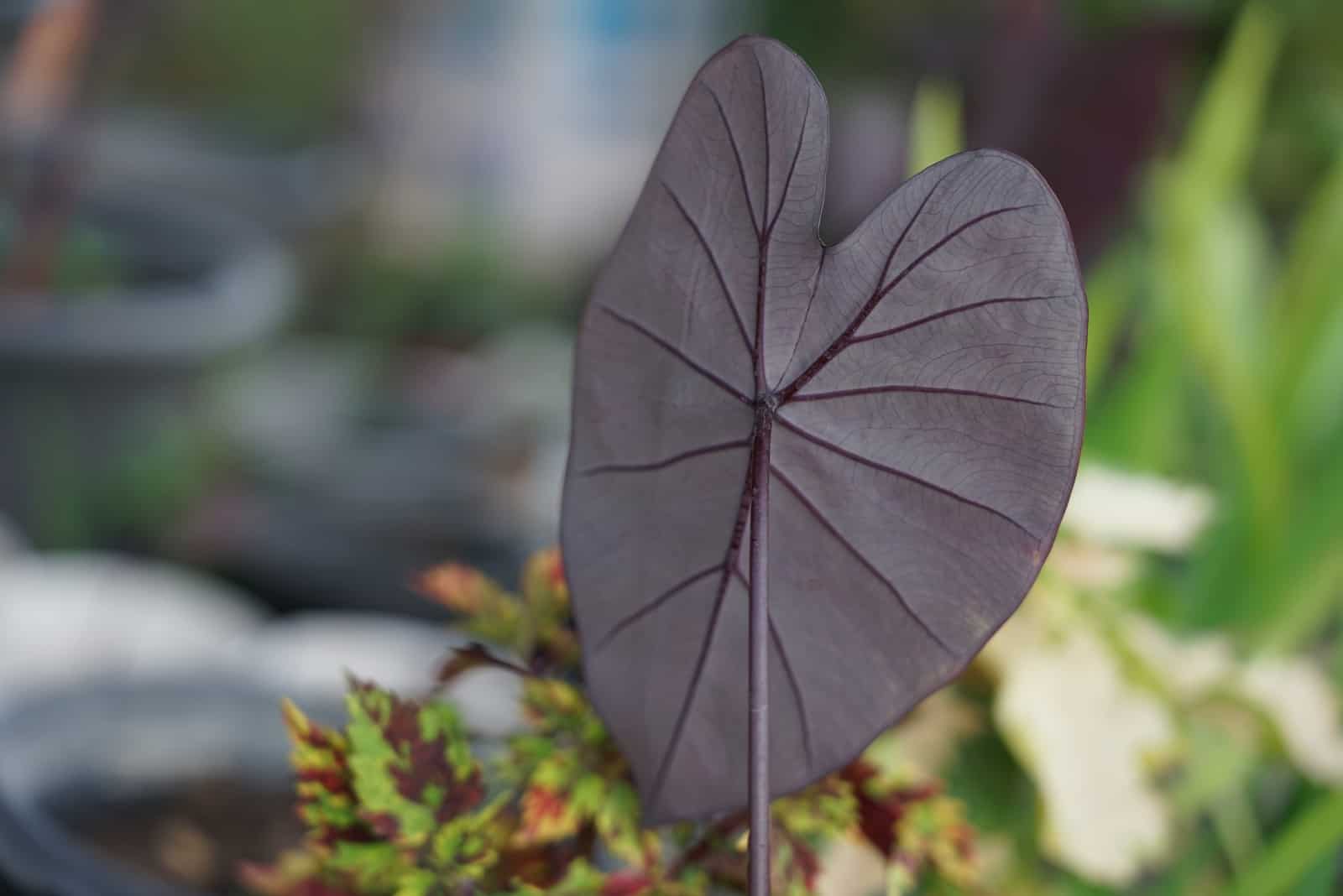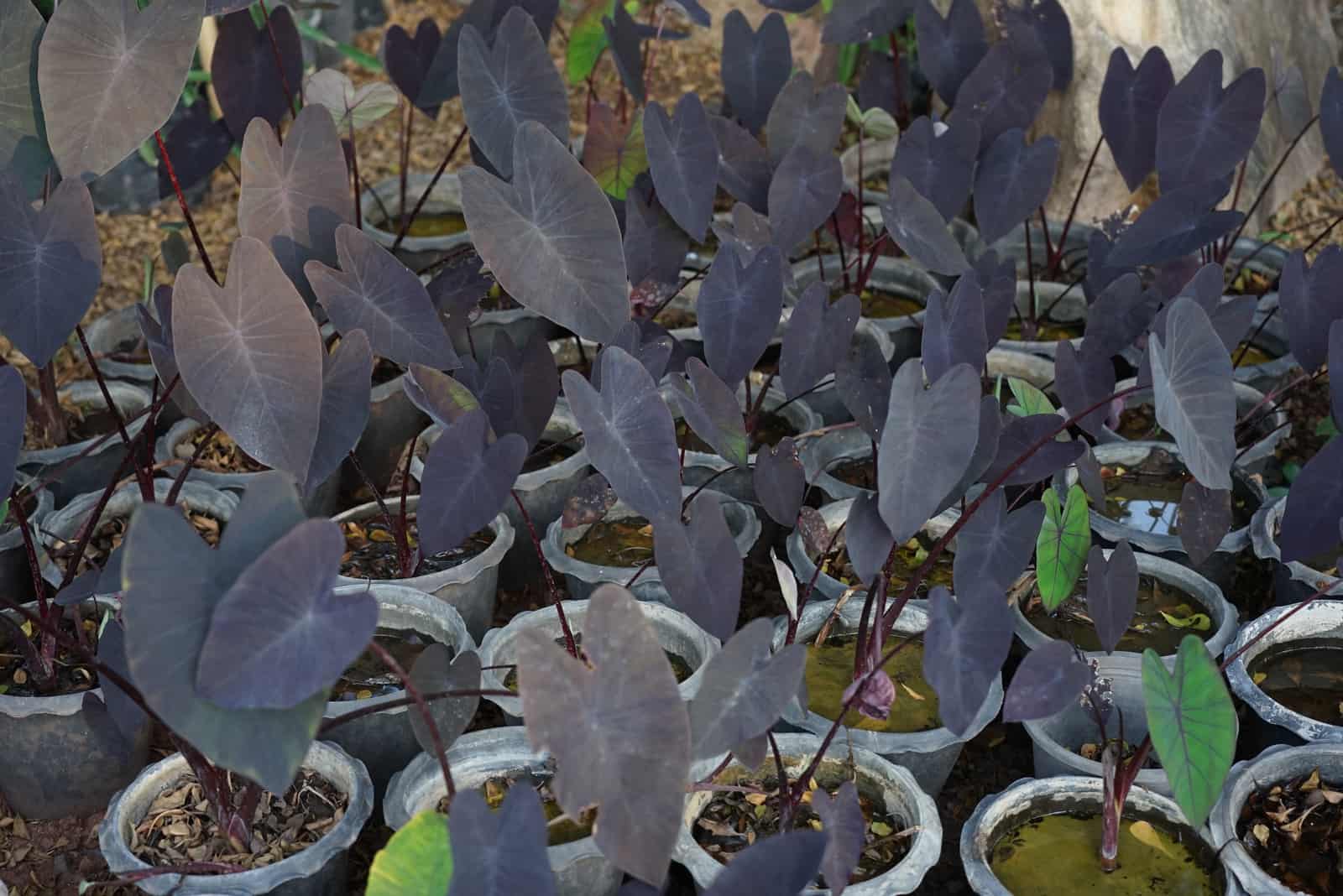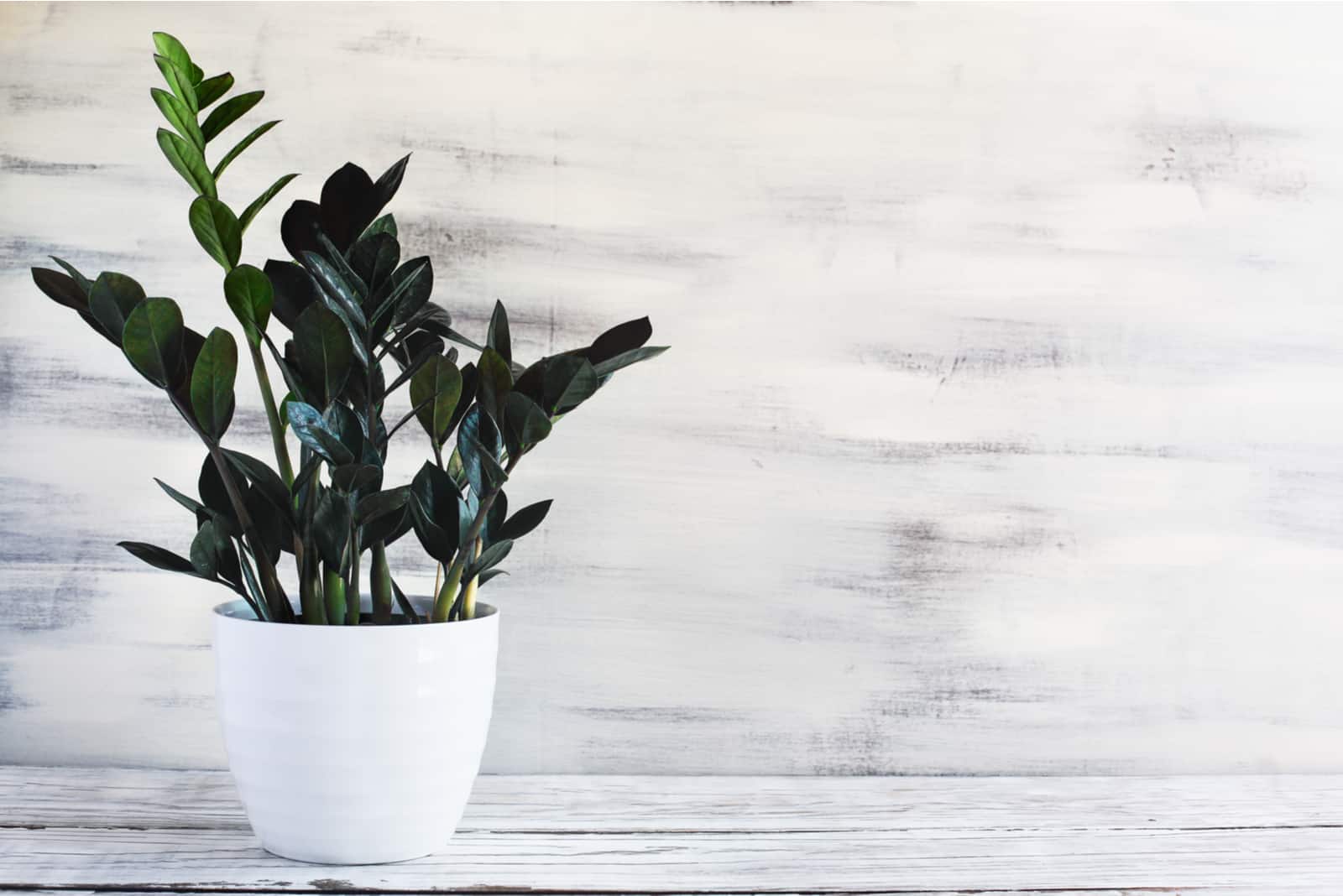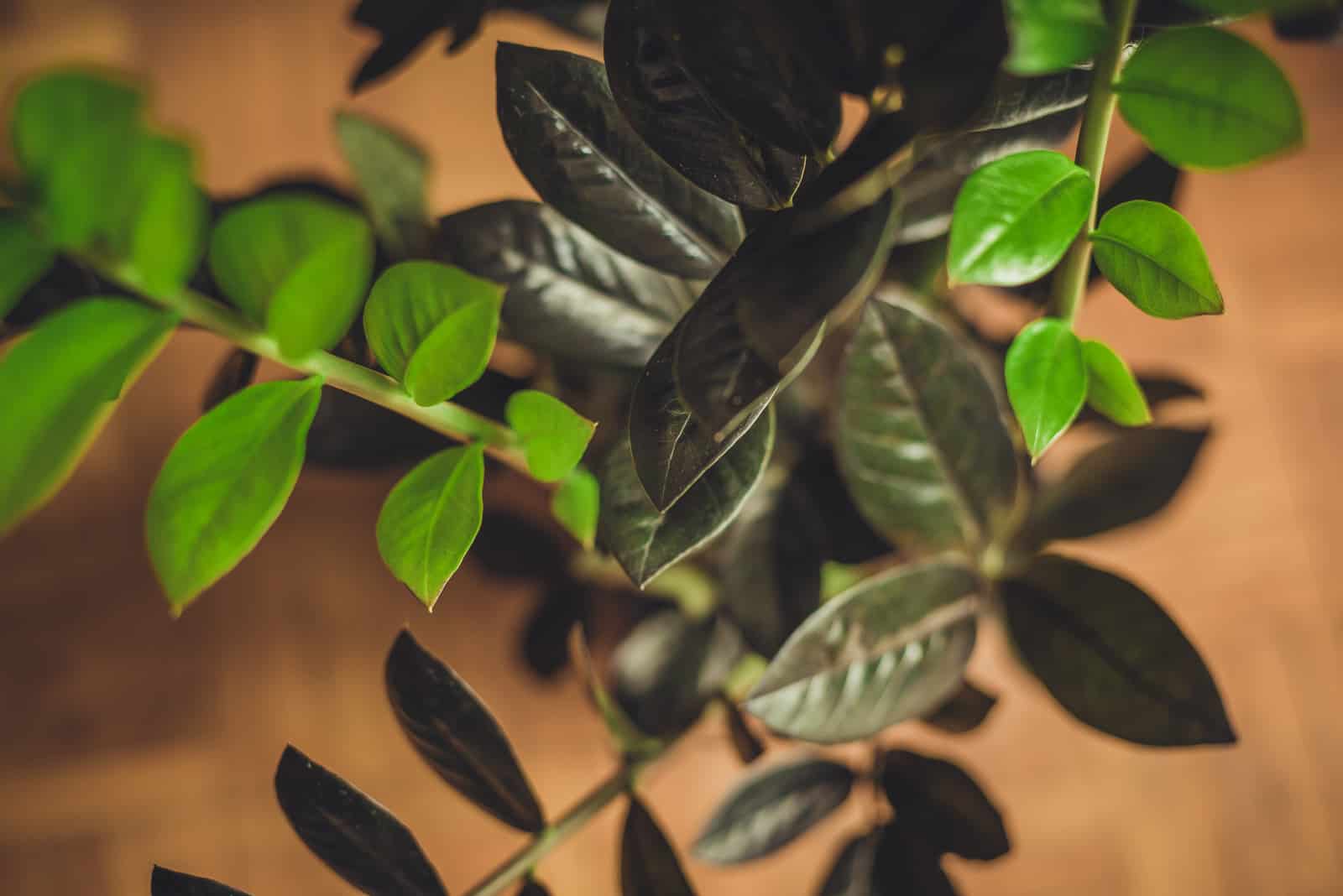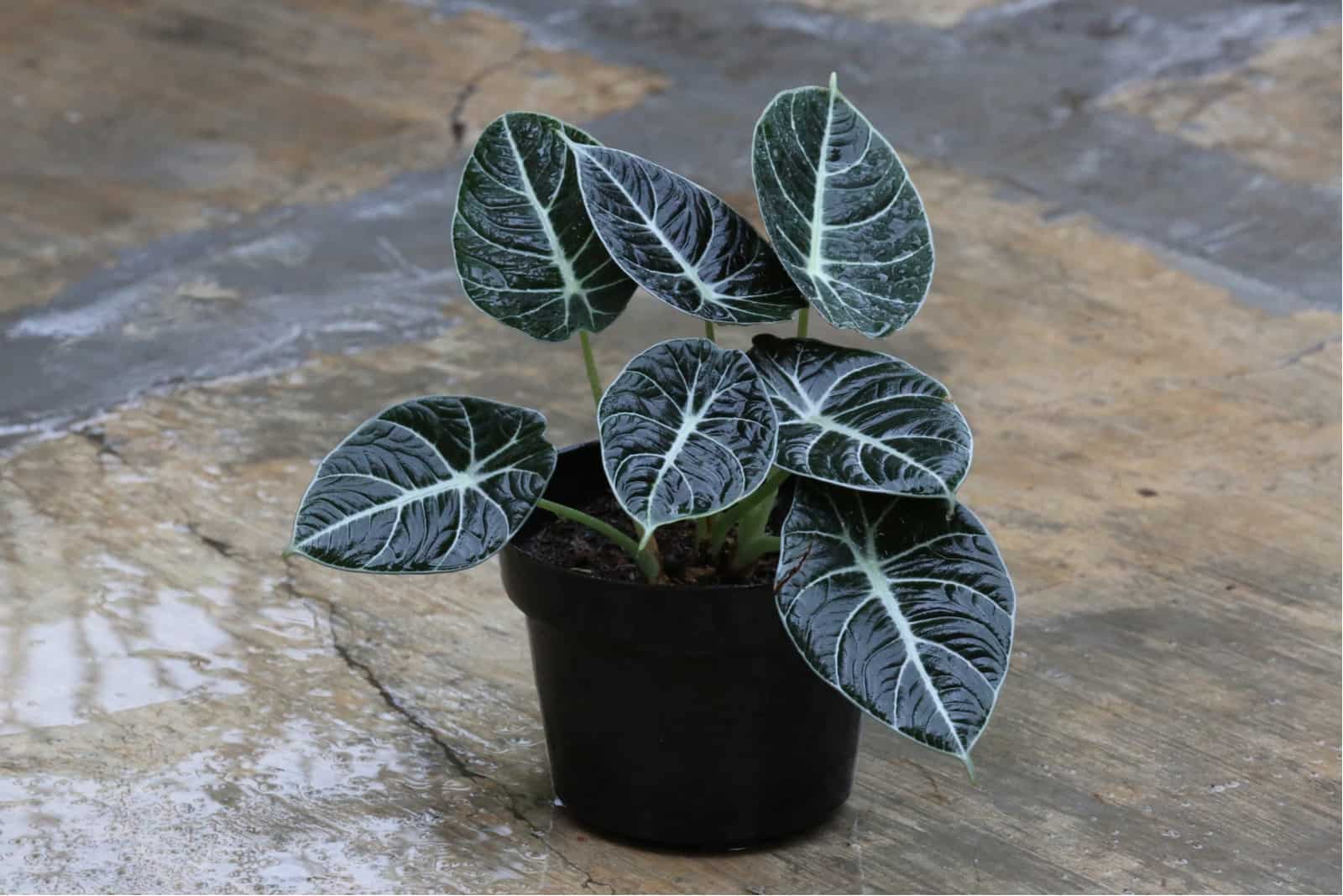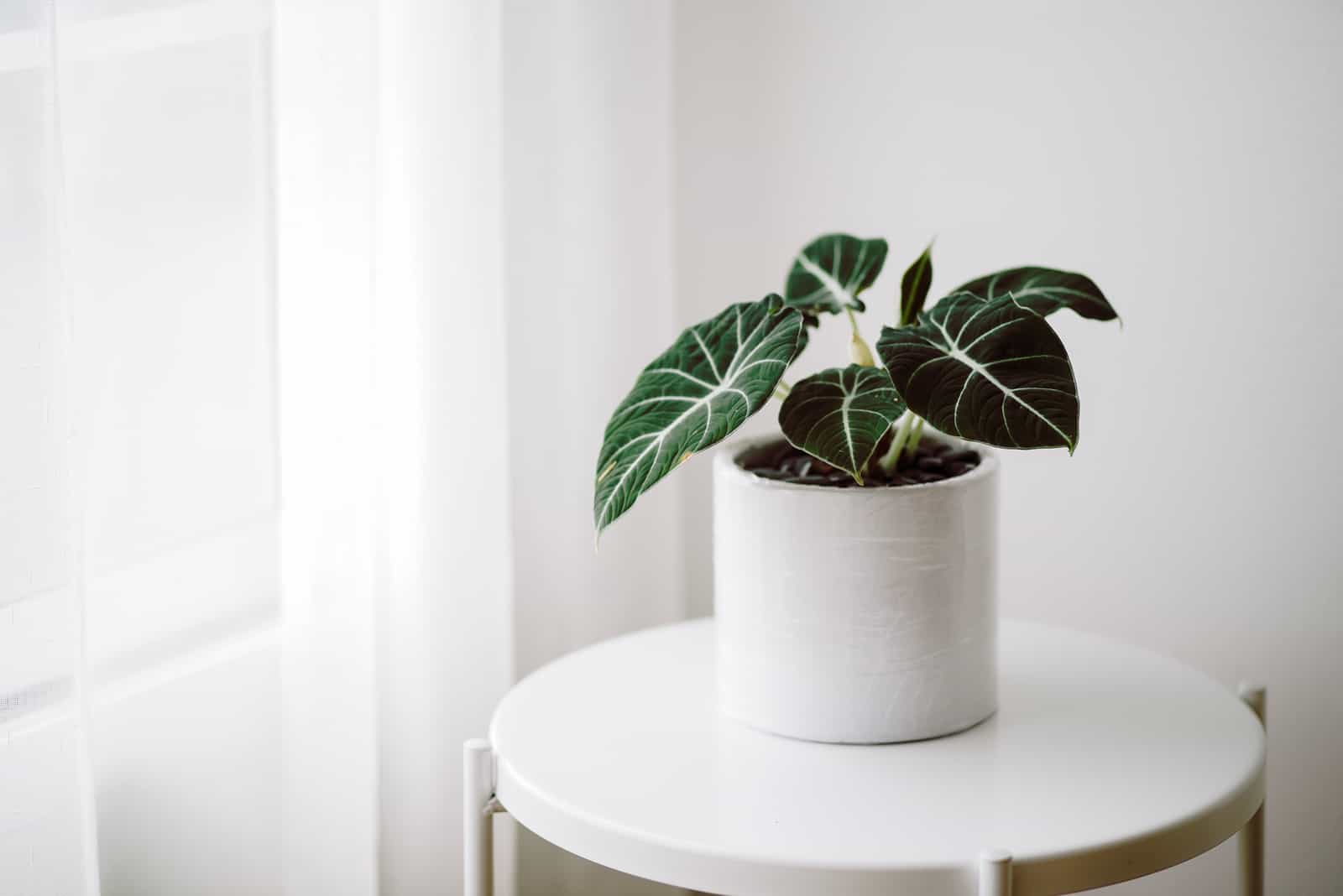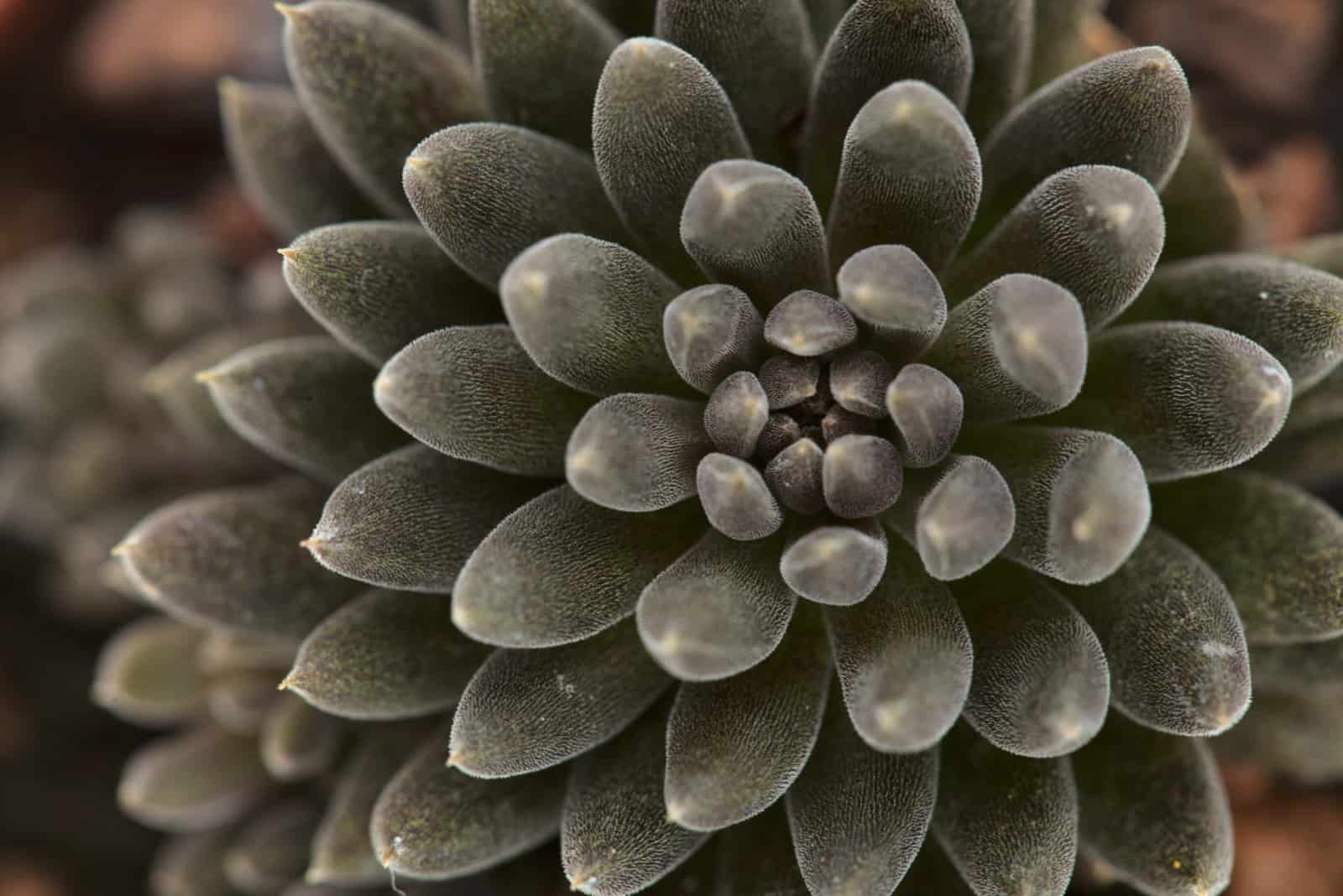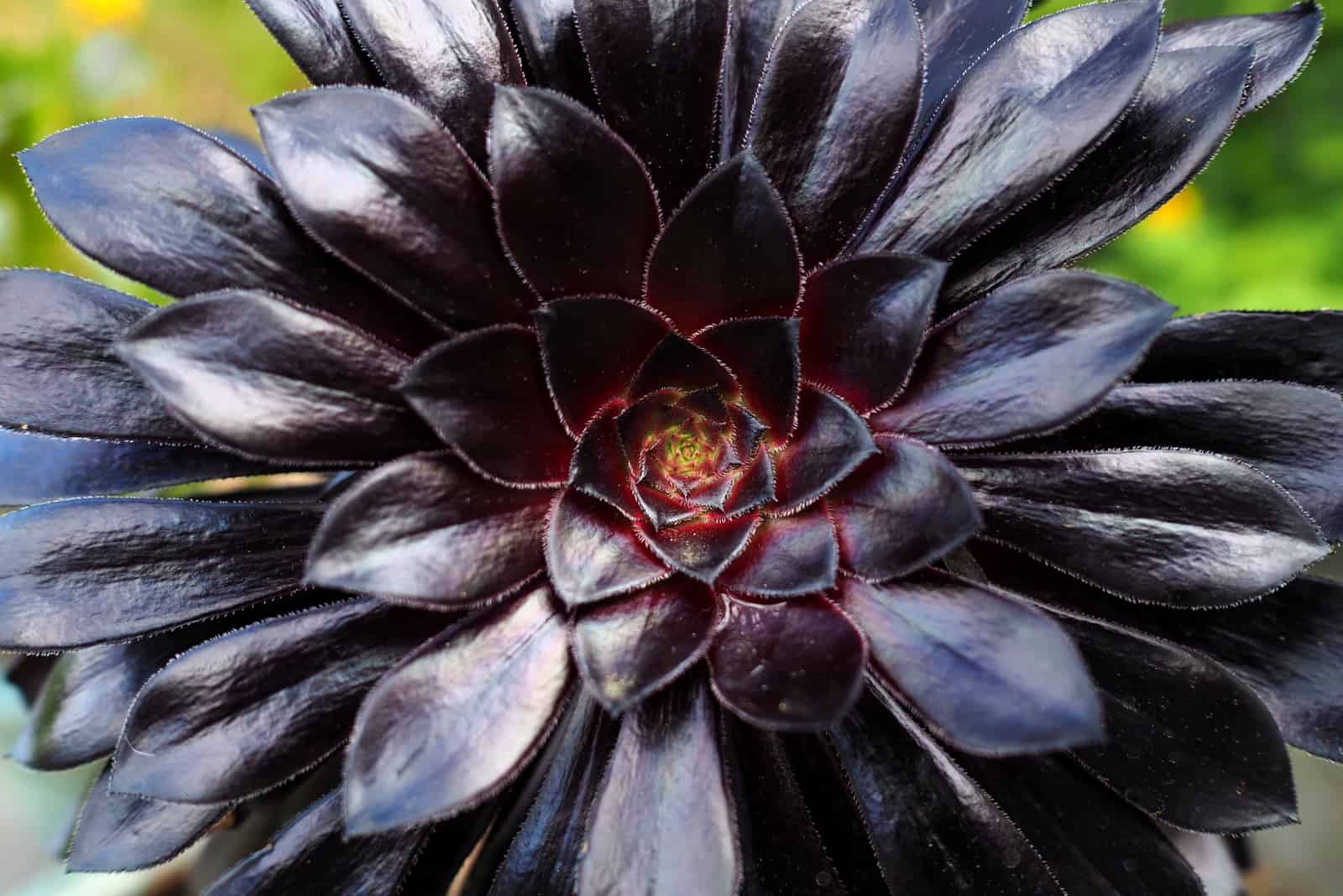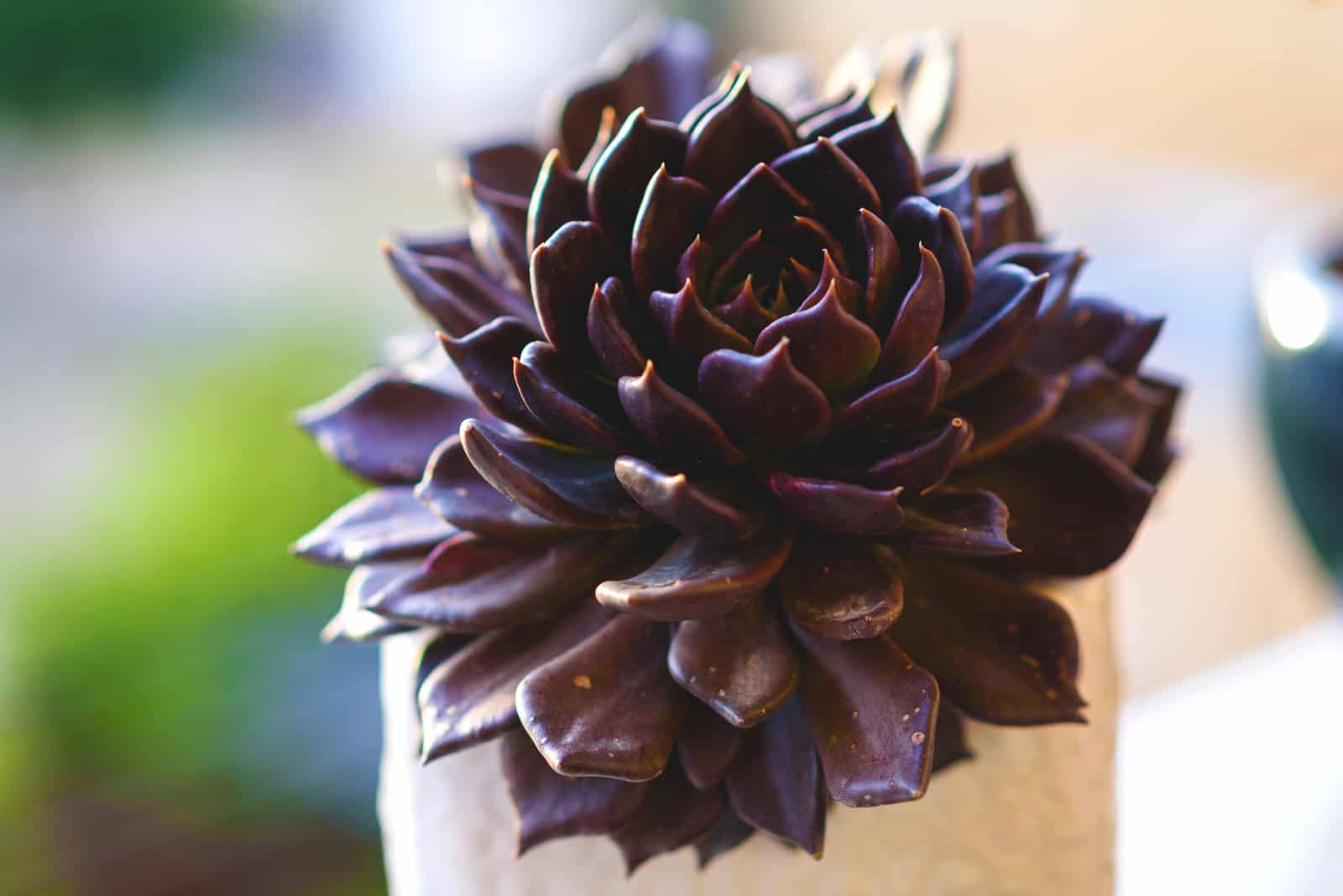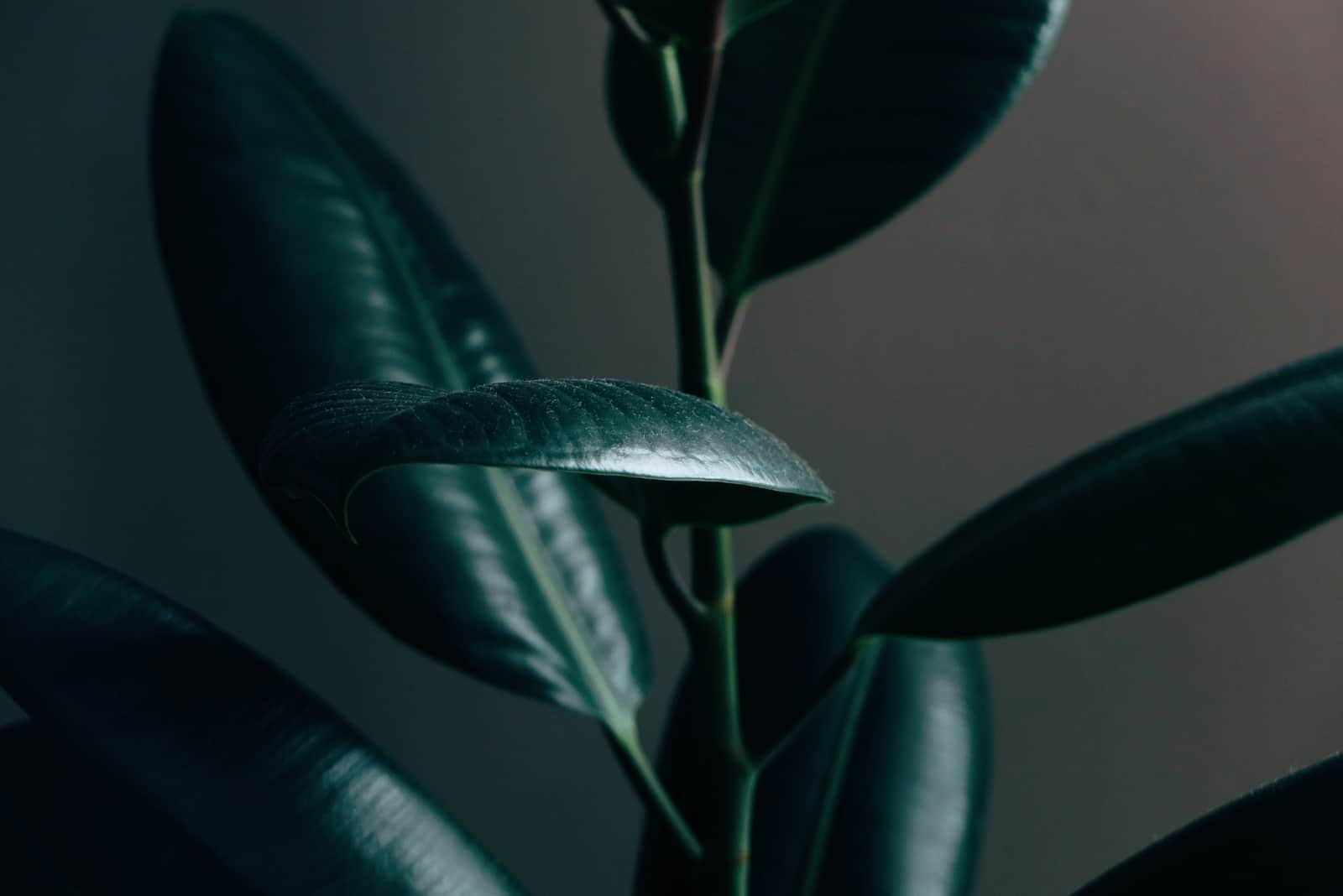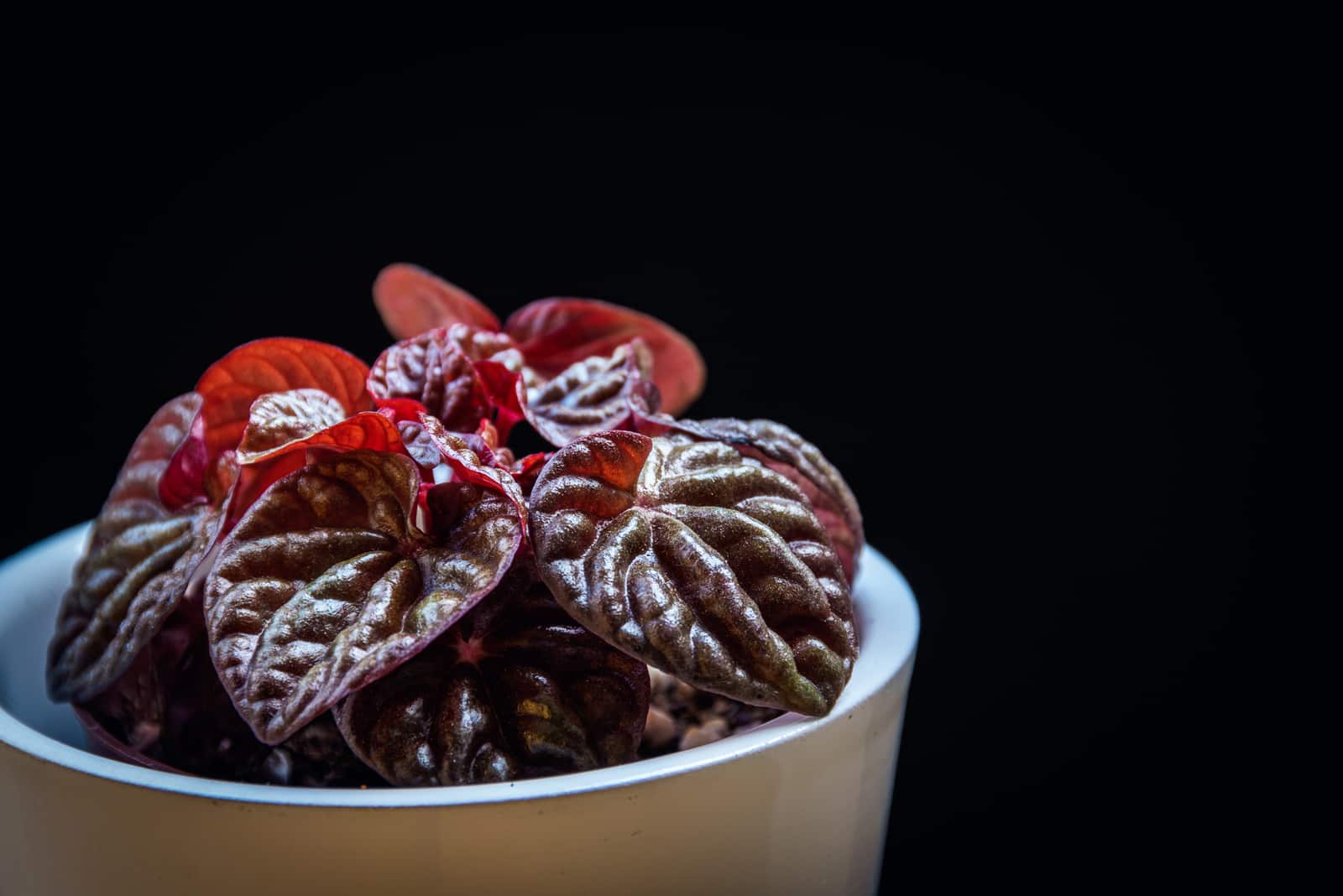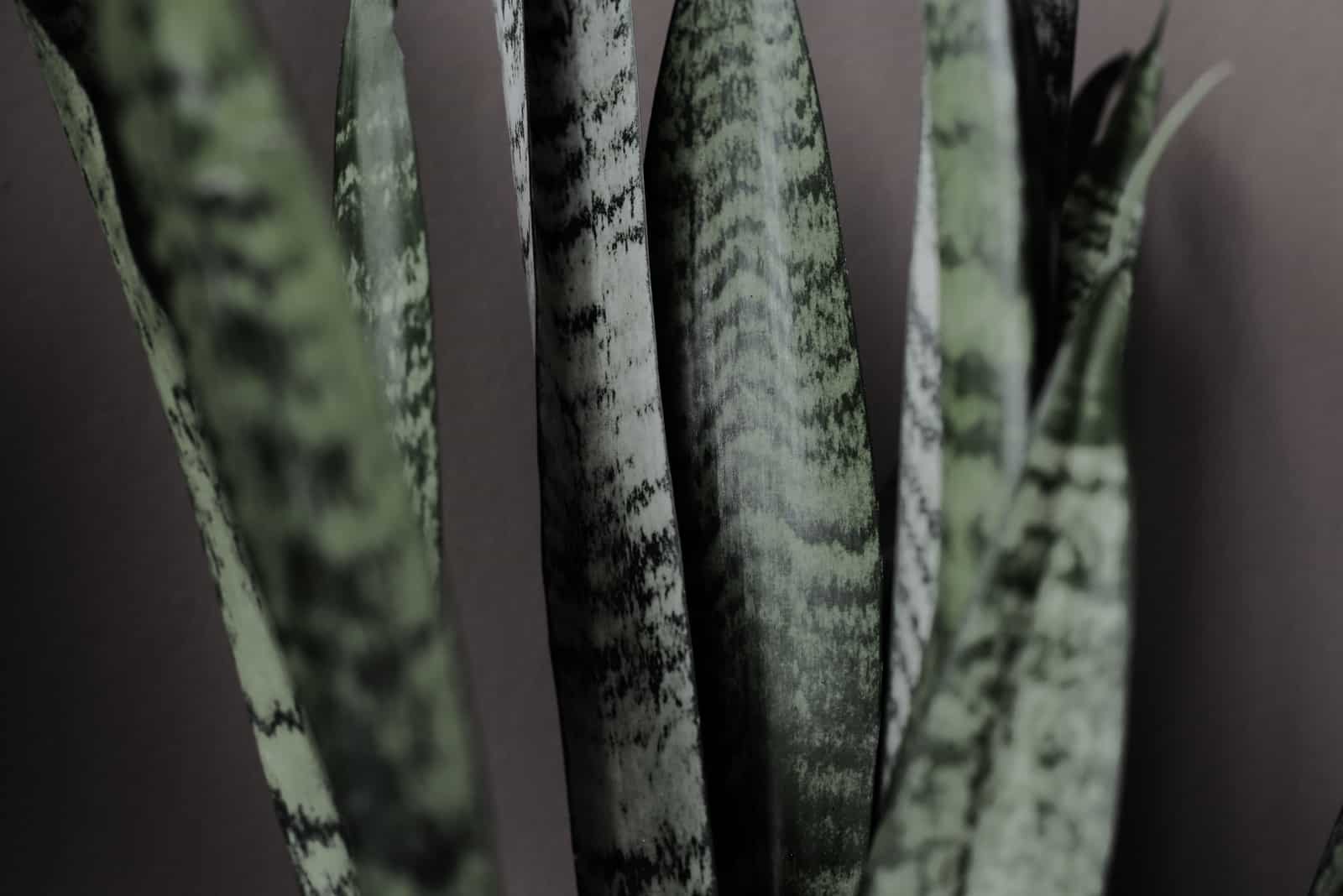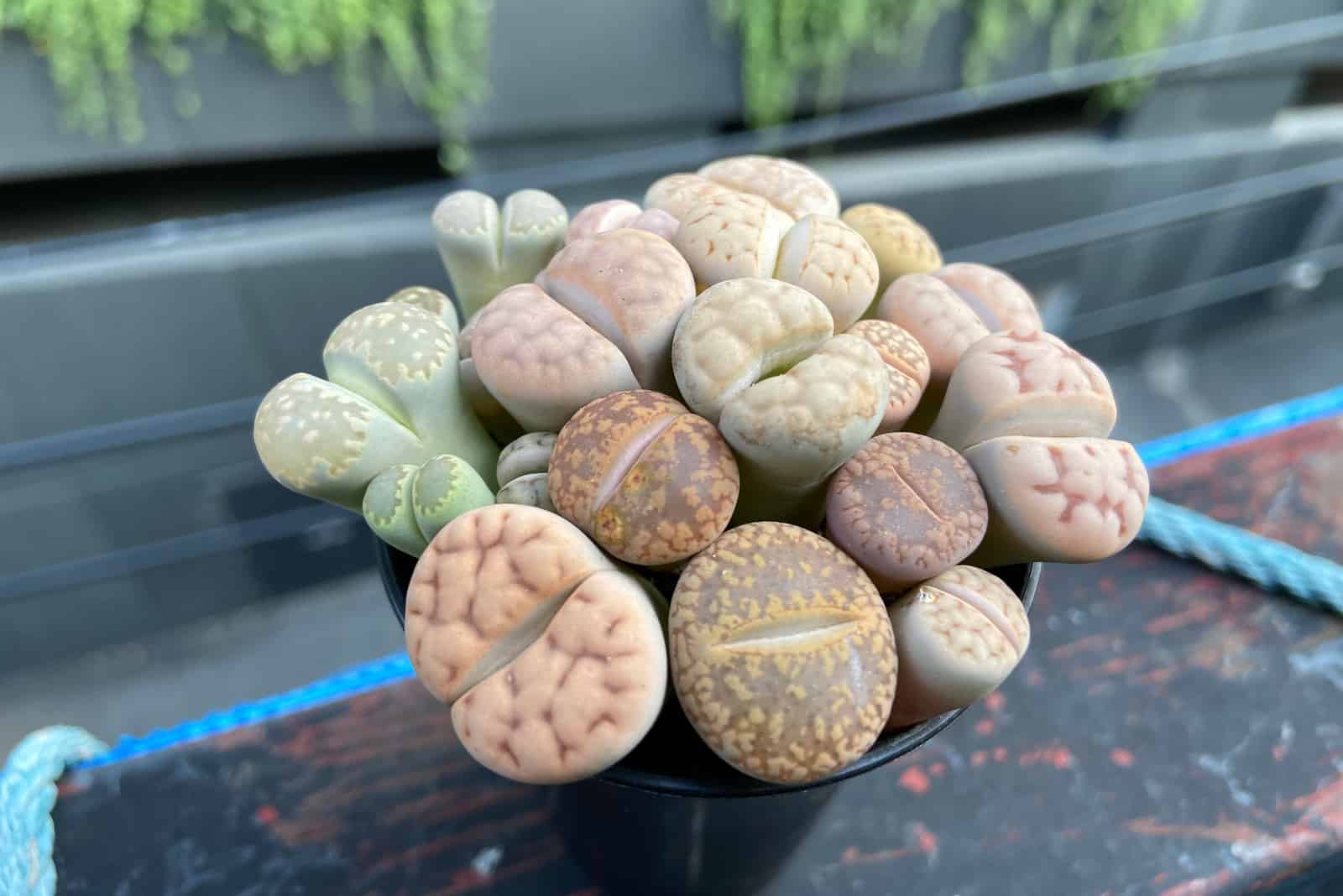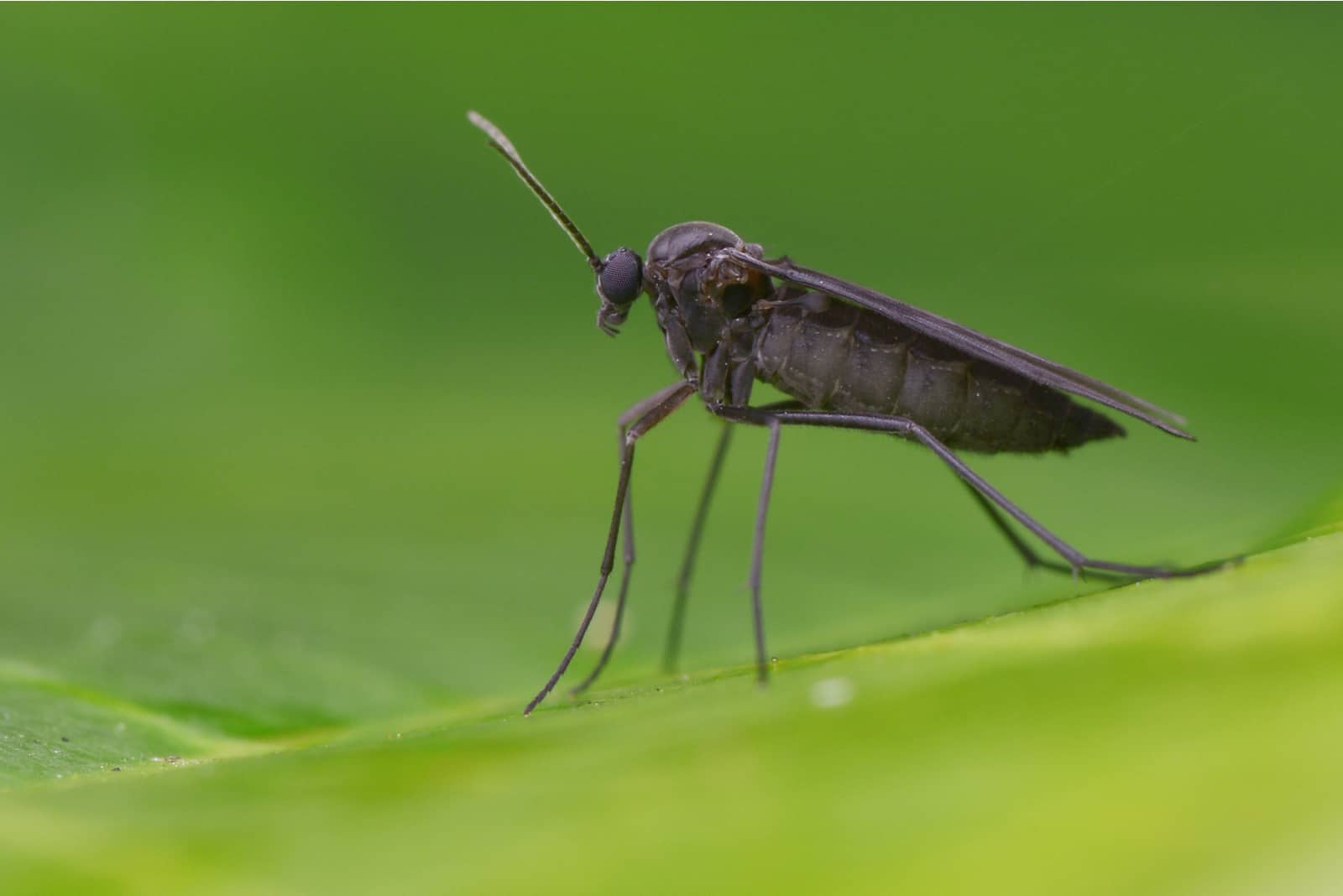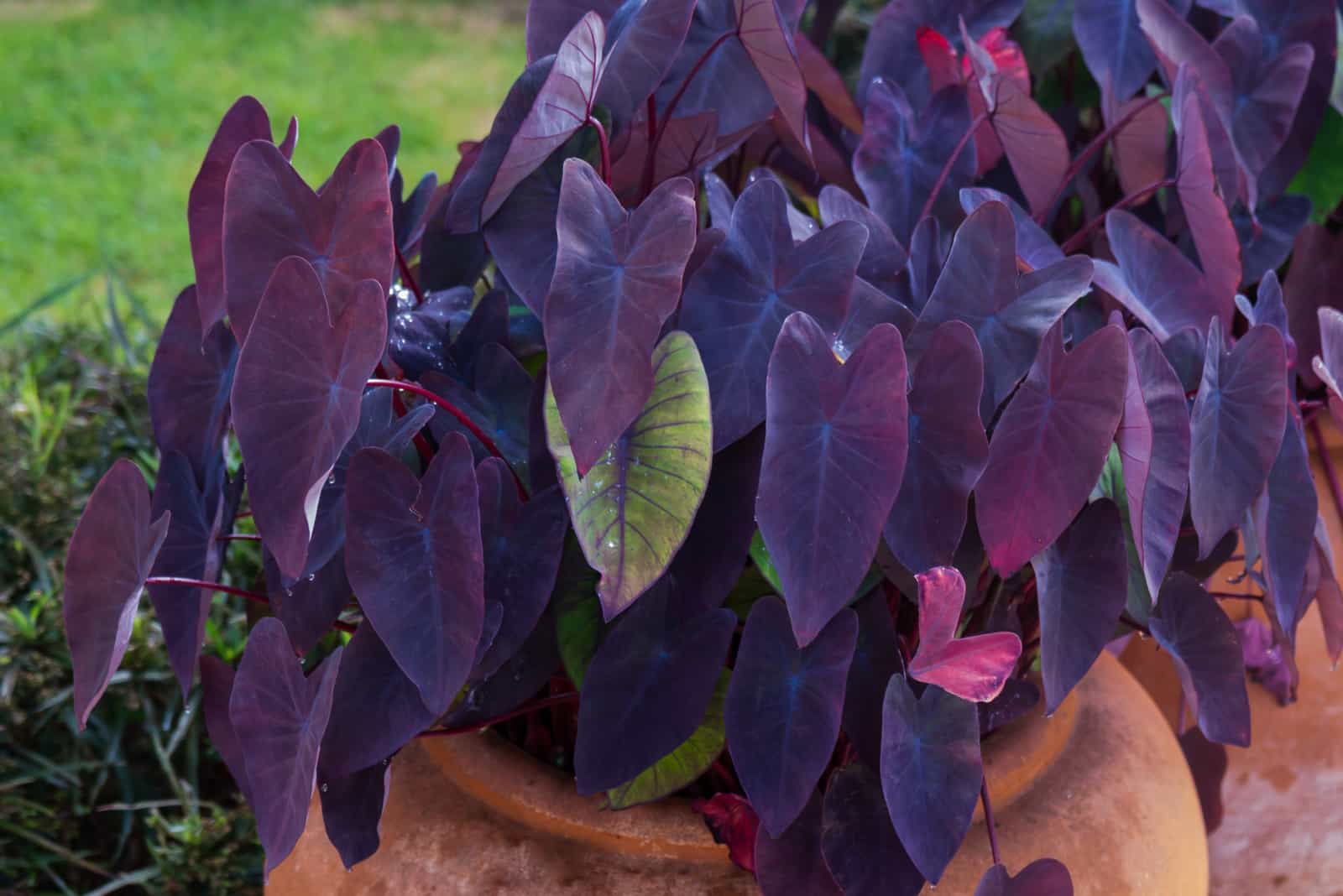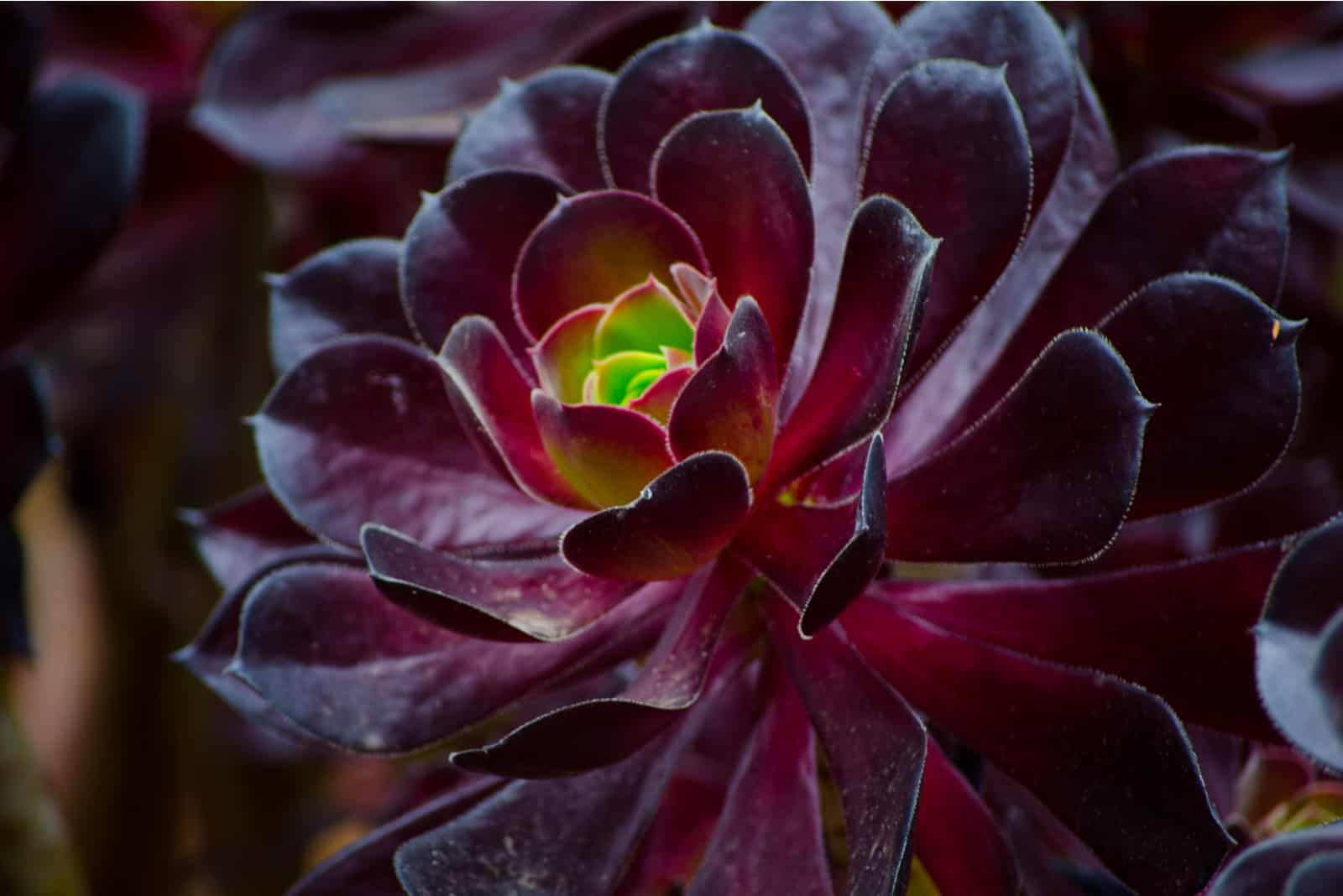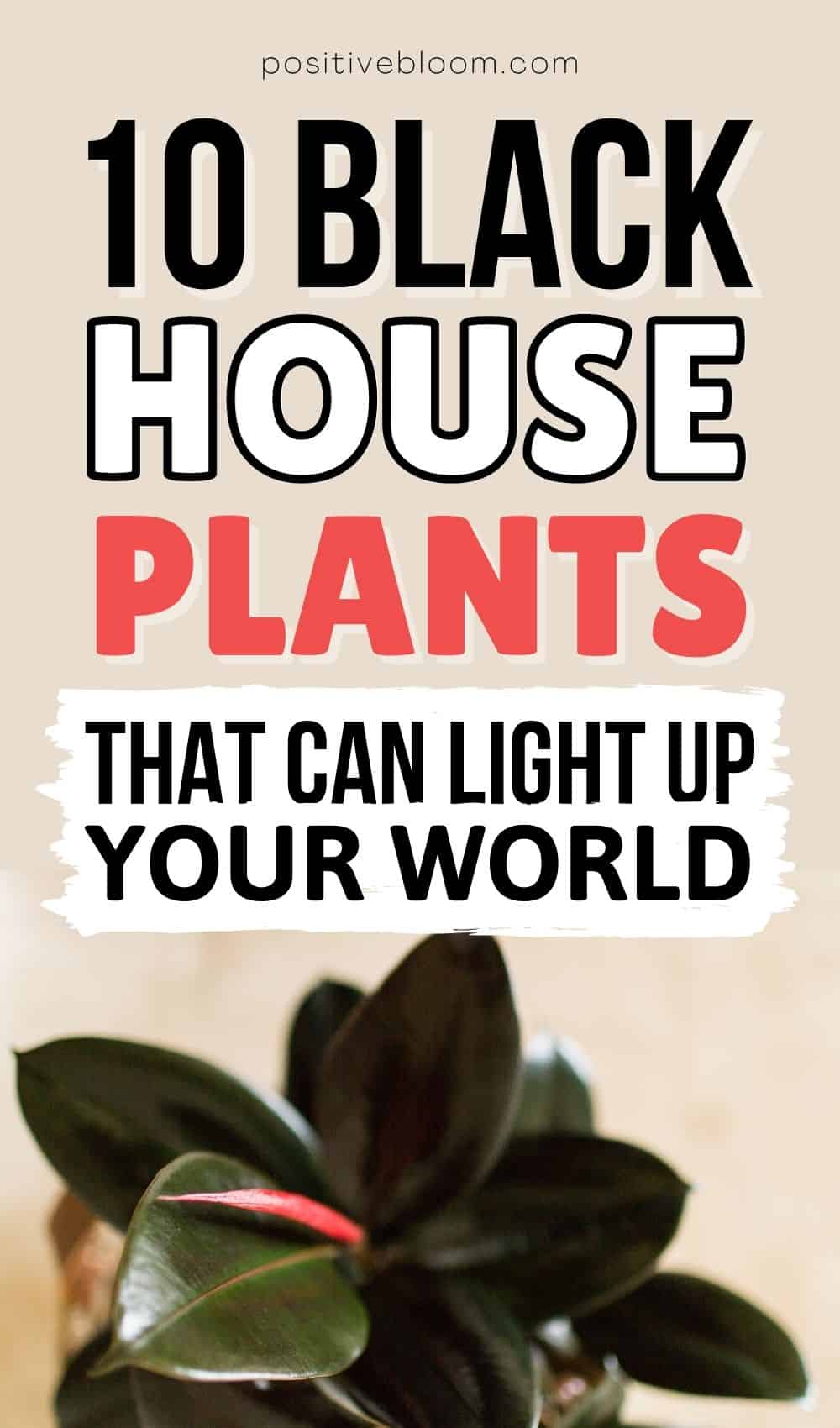When people decorate their homes, they always seem to feel like something is missing, and that something is very often plants and flowers.
This article will show you the 20 most amazing black house plants that would look great in any modern home. The only problem is that you will have difficulty deciding which one would be best!
Although you could buy them all, you know!
Black House Plants Varieties And Care Guides
We have selected our favorite black houseplants that will definitely add beauty and style to your home decor. You can read about the features and specifics of each variety, and who knows, maybe our list will give you a little push to buy one, or more, of your own!
This is why we will also show you a care guide for each one of these plants, so you can take care of them if you do get one.
Also, they go quite well with different Japanese houseplant varieties , so you can incorporate them as well and transform your library into a place where the magic really can happen.
Let’s begin!
1. Black Magic Elephant Ear
This taro plant is an amazing choice for illuminating your home. But before we go into detail, here is some basic information about the Black Magic:
[table id=27 /]
If you like really big plants, this is the right one for you!
If large plants aren’t your thing, read on as there are loads of smaller ones later that may catch your eye!
Flowers And Foliage
The first thing you notice about the Black Magic is its foliage, not flowers. The leaves of this breathtaking tropical plant are of such a deep purple color that they almost appear black.
On the other hand, the flowers are quite insignificant compared to the epic foliage. They are pale yellow and often hidden behind the leaves.
Now that you know how graceful the Colocasia Black Magic is, let’s look at some of its requirements so you can grow one on your own!
Light
The Colocasia Black Magic adores full sun exposure, which means it needs at least 6-8 hours of sunlight a day. However, it cannot handle direct sunlight for too long, so you should filter the light somehow.
It can tolerate partial shade, but won’t develop such a deep hue of purple if it’s kept in the shade.
Water And Humidity
This Colocasia requires regular watering. Once a week with 2-3 inches (2.5-7.5cm) is ideal as this won’t allow the soil to dry.
You should water the Black Magic more during its growing season, because if you water it more (without overwatering, of course), it will grow more.
A great piece of advice is to water this plant daily during the summer months.
Just like with any other tropical plant, the Black Magic likes humid environments. If you live in a more arid climate, you should consider spraying your plant from time to time or using the pebble tray method.
If you don’t feel like doing this extra work, you can always buy a humidifier and let it do the job for you.
Temperature
This tropical plant likes warm temperatures, and anything below 50°F (10°C) or higher than 90°F (32°) can be fatal.
You should also avoid draughts and sudden temperature changes!
Soil And Fertilization
The Black Magic Elephant Ear prefers moist, well-draining soil with a pH level between 5.5-7.0.
You should also ensure that the soil is rich in nutrients and has proper aeration.
Its fertilization needs are straightforward. Simply fertilize it during its growing season three or four times a year, and you won’t have any issues.
Just don’t over-fertilize as this can lead to fertilizer burn.
Repotting
These plants are fast growers, so they need to be repotted more often than other plants. However, they do quite well when they are pot bound for some time, so repotting once a year is perfect.
Also, be sure to repot it in spring or early summer as this is the growing season for this plant. This will give it time to acclimate to a new pot and soil before it enters dormancy.
2. Raven ZZ Plant
If you have recently bought a beautiful white or sparkly golden pot, the ZZ Raven would look amazing in it!
Here are some general specifics:
[table id=28 /]
Flowers And Foliage
This black succulent has striking bright green foliage that eventually turns dark purple, almost black.
The Raven ZZ can also produce flowers, however this happens very rarely, and they are not as spectacular as its foliage (some say they look like unattractive ears of corn).
Light
The ZZ Raven is quite sturdy and can tolerate many levels of light, all the way from low to bright. However, you shouldn’t expose it to too much direct sunlight as this can cause sunburn. Keeping it in low light will slow down its growth, so be careful with this as well.
Water And Humidity
The ZZ Raven is quite a grateful plant, even if you neglect it. This low-maintenance plant doesn’t require regular watering.
Water it twice a month during the summertime and once a month in winter when it enters dormancy, and you’ll be fine.
This succulent doesn’t have any humidity needs and can cope with low humidity levels quite well.
Temperature
Room temperature is perfect for the ZZ Raven. Keep the thermostat anywhere between 68 and 78°F (20-25°C), and it will thrive.
Just don’t let the temperature drop below 50°F (10°).
Soil And Fertilization
Raven plants have no particular needs when it comes to soil; they just need a well-draining medium, and that’s it. Don’t keep the soil too moist, though. Allow it to dry out between waterings.
You don’t need to fertilize this plant, but if you want to, then find a balanced liquid fertilizer and feed your plant once every 2-3 months.
Repotting
This is a slow-grower, so you can repot your ZZ Raven plant once every 2-3 years.
These plants are highly toxic and can cause irritation of the skin and eyes, so be sure to wear protective equipment.
(You don’t need visors, helmets, and vests, but gloves would be nice.)
You can find some tips for repotting and more extensive care in this video, and see that it isn’t such a dangerous job.
3. Alocasia Black Velvet
Even though they share the same name, this Alocasia has nothing in common with Allanah Myles’ song! It is a species of jewel alocasia , and is truly a treasure to keep.
First, some general specifics:
[table id=29 /]
Flowers And Foliage
The black Velvet plant has unique dark green leaves streaked with white veins, and appear almost black.
It can occasionally produce flowers, but they are nothing compared to its foliage. The flowers look like a pale yellow veil surrounding a white corn.
Light
The Black Velvet Alocasia needs bright indirect light. However, it can survive in lower light levels, but this will affect its royal color.
You can never go wrong if you keep this elegant plant near an east-facing window!
Water And Humidity
Unlike its friend the Colocasia Black Magic, the Alocasia Black Velvet doesn’t like moisture that much. You should let the topsoil dry between waterings because too much moisture can lead to root rot.
However, just like the Colocasia, this Alocasia loves humid environments. It thrives best when the humidity level is between 60-75%.
Most of our homes are drier than this, so you should think of some ways to increase humidity. Try the pebble tray method or misting your plant once in a while. Always let the foliage dry before misting again.
If you’re afraid you may cause harm to your plant, you can always invest in a good humidifier to guarantee its good health.
Temperature
Anything between 60 and 80°F (15 and 26°C) is perfect for this Alocasia. Just be sure that the temperature never drops below 55°F (12°C), and you shouldn’t have any problems.
Soil And Fertilization
The best thing you can do for indoor plants like the Alocasia Black Magic, is put them in a well-draining substrate rich in organic material.
You can give your plants some extra food once a month, just make sure you use a water-soluble fertilizer.
Never fertilize in winter!
4. Chinese Jade
The rosettes of this succulent are exceptional. Their color ripples from dark green to deep blue.
But first, general info:
[table id=30 /]
Flowers And Foliage
The dark green rosettes of this succulent resemble a sea urchin, but this isn’t a dangerous plant.
It can also produce delicate white flowers in late fall and winter.
Light
The color of the leaves depends on the amount of sunlight that the Chinese jade plant receives.
The foliage can become almost black if this plant receives at least 6-8 hours of sunlight a day. You can keep it in partial shade, but the leaves will be paler.
You can also use heat lamps for plants to make their leaves as vibrant as they can be.
Water And Humidity
The crucial thing about watering the Chinese jade is to let the soil dry out completely beforehand. Once it’s dry, you can give your jade plenty of water, as long as it’s in a well-draining medium.
As this is a succulent, it is used to arid climates and doesn’t need a humid environment. It’s a perfect black houseplant as its humidity requirements are almost zero.
Temperature
This black succulent thrives best in milder temperatures (65-78°F – 18-25°C), but it can tolerate colder or hotter temperatures (50-87°F – 10-30°C).
However, it cannot survive extreme temperatures, drought, or temperature swings for very long.
Soil And Fertilization
The best potting mix for this plant is a cactus or succulent mix because these will ensure enough drainage and aeration. Also, never let the soil be constantly moist as it can lead to root rot!
Well-balanced liquid fertilizer is the best option for Chinese jade plants. This plant enters dormancy in summer, so you shouldn’t fertilize it then.
Feed this jade plant once in early fall, and that’s it. You can also fertilize it in winter if you want, but there is no real need.
Repotting
Another great thing about this low-maintenance plant is that it rarely needs repotting. You can repot it if you see the roots at the bottom of the pot or if you have accidentally overwatered your Sinocrassula Yunnanensis.
5. Aeonium Black Rose
This Black Rose doesn’t have the fragrant flowers you might expect from other roses, but it can still make a great addition to your indoor garden.
Here are the specifics:
[table id=31 /]
You can incorporate this plant with some tall succulent varieties , and get that exotic atmosphere you’ve been longing for.
Flowers And Foliage
The flowers are rosettes of purple-black leaves. They can produce real yellow flowers, but they are not spectacular.
You can also find them variegated in the shades of red, green, yellow, and white, so you can pick which one of these slow-growing varieties goes best with your pothos.
Light
This black rose requires plenty of sunlight throughout the day: at least 5 hours. However, if summers are scorching in your area, you should shield the new leaves (as well as the old ones) to prevent sunburn.
Just place it in a shaded place when the heat is at its strongest!
Water, Humidity, And Temperature
Watering a Black Rose depends on the humidity level of the area you live in. If you live in an arid climate, you should water your plant once a week in summer and twice a month in winter.
If the humidity level is medium to high, you won’t need to water this plant as much.
Be sure not to overwater this plant as it can lead to root rot and other fungal infections.
This plant can tolerate extreme temperatures for some time, but it thrives at room temperature.
Soil And Fertilization
Like most succulents, the aeonium black rose also likes well-draining potting mixes that provide enough aeration. Succulent or cactus potting mixes work best for keeping root rot at bay.
Spring and fall are the best times to fertilize this plant. Use a well-balanced liquid fertilizer once a month, and your plant will be forever grateful.
6. Black Hens And Chicks
These black house plants are popular for many reasons: they’re small, compact, and easy to maintain, and their black rosettes go perfectly with flowers like peace lilies.
First, some basic info:
[table id=32 /]
Flowers And Foliage
The rosettes of this plant are anything but ordinary. Red to black foliage surrounds the green epicenter and their small spears point directly at you.
But they won’t hurt you, don’t worry!
The flowers of this plant are equally magnificent: small red bells with yellow stars inside counterbalance the dangerous-looking foliage.
Light
This succulent thrives best in bright indirect light. However, you can also grow it in full sun or partial shade, but you should acclimate it to those conditions first.
Water, Humidity, And Temperature
This fast-growing succulent doesn’t need plenty of water. Allow the soil to dry between waterings and water slightly more during the hot weather. You can even water it once a month in winter and it will be happy.
The Black prince doesn’t need a highly humid environment to thrive, quite the opposite in fact. It’s the perfect houseplant as it likes standard humidity levels.
Also, you don’t have to worry about temperature when it comes to this lovely plant, as it likes whatever you like!
Soil And Fertilization
Soil requirements are pretty basic for the Black Prince. It needs a well-draining soil mix, preferably a cactus or succulent mix.
Also, you don’t have to worry too much about feeding this plant. Fertilization isn’t necessary, but you can use a liquid fertilizer if you want. Dissolve it in water to a half or even a quarter of its strength, and feed the plant a few times during its growing season.
7. Burgundy Rubber Plant
This black house plant is often what’s missing from many black-and-white decorated homes.
But before discussing the details, here’s some general information:
[table id=33 /]
Flowers And Foliage
The deep green to burgundy-colored foliage of this plant can light up any room. This amazing ficus also produces flowers, but you won’t be able to see them unless you cut open and split the holder that encompasses them.
Light
The ficus elastica needs bright indirect light to get its signature color. It can tolerate low light, but constant time spent in the shadows will result in dull, pale foliage.
Water, Humidity, And Temperature
The basic rule about watering this rubber plant is to allow the soil to dry between waterings. This means you should water the plant once a week or every two weeks, but not more often than that as it could lead to root rot.
Also, you should water it more during the summer months if you keep it somewhere where there is more light.
The sky’s the limit for this plant’s humidity preferences. Anything above 50% is perfect, as is temperature between 65 to 78°F (18-25°C).
Soil And Fertilization
Burgundy rubber plants love well-draining soil with good aeration, which will prevent this plant from drowning in water.
When you feed the rubber plant, be careful not to add too much fertilizer as it could lead to fertilizer burn. Use water-soluble fertilizer once every 2-3 months and your plant will be just fine.
Repotting
The Ficus elastica is a fast grower, so it needs to be repotted at least once a year or when you notice that the roots are coming out of the pot.
Also, this plant is a true climber, so you might want to consider staking it on a moss pole or a moss pole alternative if you don’t like the mess.
8. Burgundy Ripple
Once you get a burgundy ripple, you will see that any room has the potential to be worthy of a king or queen.
Here is some basic information about this gem:
[table id=34 /]
Flowers And Foliage
The ruby foliage of this peperomia indeed looks like it belongs in a court or palace. They are pet-friendly, which is all the more reason to get one.
This plant also produces pale, white-green flowers, but they pale in significance compared to the majestic leaves.
Light
This peperomia will do best in bright, indirect sunlight. It can adapt to low light, but I think it would look marvelous on an east-facing windowsill.
But, whatever you do, never expose it to direct sunlight as this can burn its exceptional foliage.
Water, Humidity, And Temperature
It’s better not to water the burgundy ripple if you’re unsure whether it needs water. You should let the soil dry before the next watering. Also, you should water it only 2-4 times a month, depending on the climate in your area.
Another great thing about this black house plant is that it doesn’t require a humid environment. The average humidity of your home is perfect for this plant.
This plant likes medium levels of everything: water, humidity, and temperature. You can keep the thermostat anywhere between 60 and 80°F (15-26°C), and your plant will thrive.
Soil, Fertilization, And Repotting
This plant adapted to the rainforest of the Amazon and Brazil in general quite well, but it still doesn’t like being flooded with water. That’s why you should use a well-draining substrate that will provide enough aeration for the roots of this plant.
When you feed your burgundy ripple peperomia, always use water-soluble fertilizer and fertilize your plant during the growing season, once a month at most.
As this plant isn’t a quick grower, it doesn’t require frequent repotting. You can never go wrong with repotting your plant once every 2-3 years during the growing season.
9. Black Coral Snake Plant
In addition to being quite pleasing to the eye, this black house plant can also filter the air. And if you’re keeping it for Halloween, it would improve the dark and gothic look of your house in no time!
[table id=172 /]
Flowers And Foliage
The dark foliage of the black coral truly looks like tongues, so it’s no wonder this plant is also known as mother-in-law-tongue. They are often streaked with paler hues of green that sometimes may even appear yellow.
Tiny clusters of white flowers may appear in summer, but they do nothing to alleviate the terror it may instill!
Light
Even though this plant looks frightening, it isn’t all that demanding. It needs bright indirect light to thrive, but it can do just as well in low light conditions.
Water, Humidity, And Temperature
Its watering needs are equally modest. Allow the topsoil to dry between waterings and then water thoroughly. Also, you don’t need to water it as much in winter as too much water can lead to root rot.
The Snake plant is drought-tolerant, so it doesn’t require a humid environment to flourish. The incredible thing about this plant is that it can prosper in any humidity level.
It also prefers warm temperatures. Anywhere between 60 and 90°F (15-32°C) is perfect.
Soil And Fertilization
This plant needs a well-draining substrate, and you can always add sand to your regular potting mix to improve the drainage if need be.
You don’t need to use fertilizers to help your snake plant grow, but you can use liquid fertilizer once a month during the growing season if you like.
10. Pebble Plants
Pebble plants are amazing. They genuinely resemble small rocks until you get a better look. Some fantastic black lithops can spruce up your room in no time!
Here are the specifics:
[table id=36 /]
Flowers And Foliage
Black lithops do have foliage, although they look like stones. They produce unique flowers through the crack in the middle.
They flower in winter and will adorn your home with pale orange, yellow, or white flowers.
Light
Pebble stones grow best when exposed to bright indirect light in the morning and partial shade in the afternoon. The ideal place for them is on a south-facing windowsill if you live in the Northern Hemisphere.
If you cannot find ideal light conditions for your lithops, you can always use grow lights!
Water, Humidity, And Temperature
You should water this plant during its growing season, from spring to summer. However, you should stop watering it when it enters dormancy. That said, you should only water your lithops in winter if you see that the foliage is withering.
These plants also require low humidity and room temperature. No wonder they are so popular!
However, if you live in a hotter area it’s important to remember that these plants can tolerate temperatures above 90-100°F (32-37°C), but only for a short period.
Soil And Fertilization
You should plant the lithops in the same soil which you would use for cactuses. They need well-draining soil to survive.
Also, you don’t need to fertilize these plants, but you can feed them just a little bit before their blooming season.
Little Black Flies On Houseplants
Pests attack all plants, and black house plants are no exception.
The little black flies that attack most houseplants are known as fungus gnats. They are very similar to fruit flies, but if you see something flying around your plants, you’ll know that they are sciarid flies.
However, the name “sciarid flies” is more frightening and dangerous than the flies themselves. They are harmless to your plants, and you don’t need to get rid of them.
But, they multiply at the speed of light and can give you quite a headache.
They attract flies which love moisture, and that’s primarily what attracts them to your plants. You might not notice them on your black orchids or Coleus Black Dragon, but they can also taint the beauty of your petunias.
There are easy ways of dealing with these pests, mainly by keeping the soil dry! Keeping succulents safe and healthy is easy when you know how.
You can also use pesticides and insecticides to kill the larvae before they become flies.
And finally, my favorite method, only because it is exciting: making traps for flies! Put some honey on sticky tape and place it around your plant. This will prevent any flies from ever laying an egg on your house plant.
FAQs About Black Houseplants
So far, we’ve looked at some amazing black house plants that would make a great addition to your Haworthia Nigra or Black Cardinal Philodendron.
However, we have even more in store for you. In this section, you will find the answers to the most frequently asked questions about black house plants.
Are black plants rare?
In general, black plants aren’t rare. There are many more varieties of black house plants out there than what we’ve discussed today.
However, truly black plants are rare in nature, and all the other varieties are usually a result of specific breeding programs.
Also, many plants that are considered black plants aren’t really black. They are more dark purple, deep green, or red, and if you take a closer look you will notice this difference.
However, it doesn’t mean they are any less pretty than “real” black plants.
What houseplants grow in the dark?
There are no houseplants that grow in absolute darkness. However, plants like the snake plant, pothos, peace lily, and Chinese evergreen can tolerate low light conditions quite well.
Some plants even prefer growing in shade rather than in light, but no plant actually grows in the dark as they need sunlight for photosynthesis, which is how they get food.
Do black plants grow in the dark?
No, black plants do not grow in the dark, and some even prefer full sun exposure to partial shade.
However, there are black house plants that can tolerate low light levels quite well, while some like the shade.
What are the benefits of black house plants?
Different varieties of black house plants have different benefits. The snake plant and ZZ Raven, for instance, purify the air, whereas pothos can eliminate odors and even help soothe the eye irritation caused by the blue light from screens.
There are many benefits of black house plants other than decoration. They bring positivity to your home and even help to alleviate anxiety!
Final Thoughts
This article discussed some truly unique plants. This is a list of our favorites in terms of care and beauty. All of these black house plants are excellent for anyone with an over-crowded schedule as they are relatively easy to care for.
And finally, what else can we say but good luck choosing the perfect black house plant for you!
Until next time!
Like this post? Share or pin it for later!

